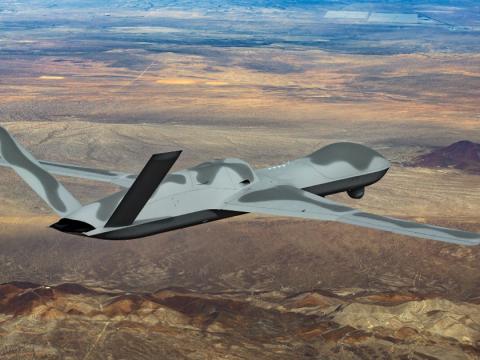Incoming: In Praise of Quantity
The late Vladimir Ilyich Ulyanov, better known by his nom de guerre, V.I. Lenin, used to be famous, or at least infamous. As the founding dictator of revolutionary Russia, Lenin built a grim, cruel and mighty police state whose oppressive successor to this day menaces all too many unhappy people in eastern Europe. The man the Communists once idolized as “our dear Ilyich” is long gone and, in decent circles, not missed very much.
The late Vladimir Ilyich Ulyanov, better known by his nom de guerre, V.I. Lenin, used to be famous, or at least infamous. As the founding dictator of revolutionary Russia, Lenin built a grim, cruel and mighty police state whose oppressive successor to this day menaces all too many unhappy people in eastern Europe. The man the Communists once idolized as “our dear Ilyich” is long gone and, in decent circles, not missed very much.
In his day, Lenin had a lot to say about diverse matters, political and not. Worshipful Communist acolytes preserved their great man’s every jot and utterance, no matter how banal. Along with recipes for revolt and cryptic observances about the glories of “scientific socialism,” Lenin styled himself a student of Carl von Clausewitz, the great Prussian war theorist. Pressed one time to account for old Russia’s chronic inability to develop modern weaponry and consequent reliance on raw numbers, Lenin croaked: “Quantity has a quality all its own.”
Well, Lenin was wrong about a great many things, but he got that one right. In war, numbers matter. Things go wrong. Enemies prove more dangerous than expected. Losses add up. So when you get into the arena, you need to bring all you can. If 10 are good, 20 are better, and 100 are best of all. To use a football analogy, the troops want to win 73-0 in a laugher, not 10-7 in overtime. Big wins demand big numbers.
The U.S. armed forces used to know that very well. In World War II, U.S. factories cranked out 324,000 aircraft, 890 major warships, some 35,000 landing craft and more than 100,000 tanks. Shielded by a robust nuclear deterrent in the Cold War, the country backed down quite a bit; but by the mid-1980s, the United States still fielded more than 15,000 fixed-wing warplanes, nearly 10,000 helicopters, almost 600 major combatant ships and some 17,000 tanks. U.S. foreign policy made good use of all of that combat power to prevent conflicts, reassure allies and intervene now and then.
As the Cold War ended and Lenin’s Soviet Union deflated, the United States kept the long laundry list of overseas commitments. The country even added some, as fellow citizens can rarely resist heart-rending video footage on CNN. But force numbers were chopped. Even allowing for the very modest ramp-up to battle al-Qaida after 9/11, today the United States fields about 7,000 aircraft, some 6000 helicopters, 283 naval vessels and 8,325 tanks.
Those numbers are less than the country needs. And they are headed downward.
Not to worry, say the so-called experts. “Lenin was some old Commie—what did he know? We have quality high technology on our side.” Elderly B-52 bombers, aging Aegis cruisers and long-in-the-tooth M-1 tanks have been pumped full of the latest information technologies—the military equivalent of strategically injecting Botox and silicone into an aging Hollywood star. “Our gear is better”—mostly true today—“our people are better”—certainly true today—and “it’s always been that way and will always be that way.” Well, maybe. But at a certain point, the force does need some actual numbers.
In that regard, the trend is not a friend—far from it. The U.S. arsenal is approaching museum vintage. Only three major new aircraft are in production: the KC-46 tanker, the P-8 sub hunter and the F-35 Air Force/Navy/Marine Corps/allied superplane. All the rest are continuations of older lines and refits. Or, the force is just making do. At sea, construction of Arleigh Burke-class destroyers has restarted—again nice, but nothing new. On the land, the same 1991 Iraq War era M-1 tanks and Apache helicopters are in use—only less of them. Planners nip and tuck and plump and primp with information technology; but the result, year after year, is less old equipment propped up with expensive electronic inserts. The force lacks quantity, and soon it will lack quality, too.
Stifled by sclerotic procurement regulations and political micromanagement, the country continues to pay more and more for less and less. Auditors and bean counters agonize over every scrap of data, pawing through it all like ancient augurs seeking wisdom in bird entrails. The result is more studies, more PowerPoint and more “analysis.” And when all the dust and electrons settle, the force always seems to get fewer shooting irons.
So far, the nation’s defense has gotten by. But counting on a lucky streak is not a very viable long-term strategy in Las Vegas casinos, let alone when compelled to trade shots with aggressive, hostile regional powers.
Well, as Lenin might ask, what is to be done? Old Vladimir Ilyich knew. He demanded that his comrades put an end to the old system—revolution, pure and simple. The country doesn’t need literal blood and fire, but damn near. The Defense Department, Congress, the armed forces, the defense industries and especially the U.S. citizens they all serve need to get serious about a clean-sheet procurement revolution. The key is to start with the end state—quality weapons in quantity—and go from there. But by all means, start. Lenin’s unruly descendants continue to trust in numbers. We had better bring enough of our own to do the job.
Lt. Gen. Daniel P. Bolger, USA (Ret.), is a former troop commander in Iraq and Afghanistan. The author of seven books and numerous articles, he currently teaches at North Carolina State University.



Comment
Quantity
The article by Gen Bolger was right on. We seem to think technology will solve all problems but how well did it work in Vietnam. Wars are generally won by those who put the most on the battle field. Numbers matter. Also, a strong large force deters the start of wars. The current program of reducing our military encourages the militants in the middle east to get more bold.
Comments